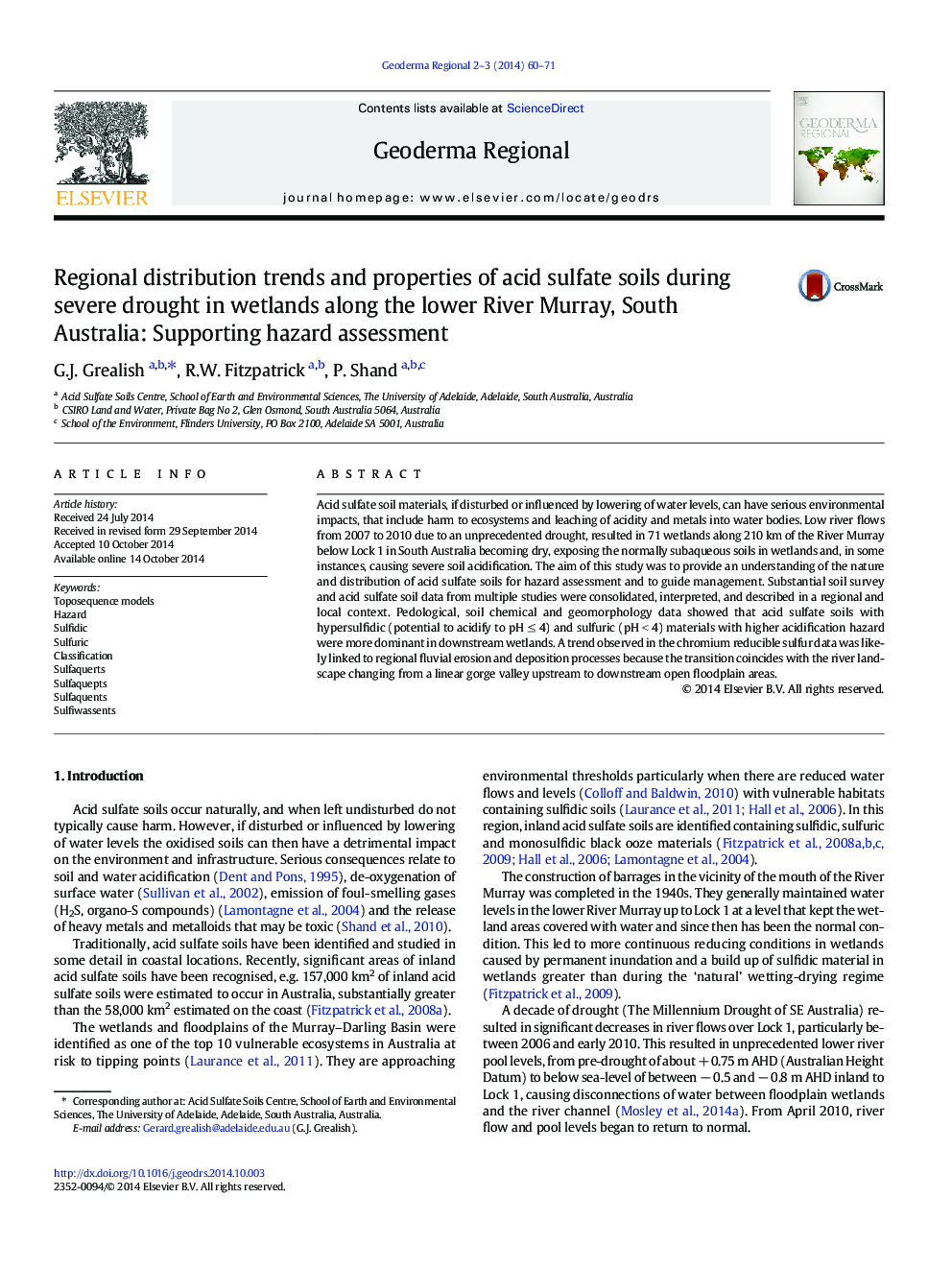| Article ID | Journal | Published Year | Pages | File Type |
|---|---|---|---|---|
| 4480812 | Geoderma Regional | 2014 | 12 Pages |
•Unprecedented drought resulted in vast areas of acid sulfate soils being exposed.•Soil characteristics and features are described to inform management decisions.•Conceptual toposequence models were used to represent the soil distributions.•Chromium reducible sulfur data is spatially linked with a regional landscape trend.•Planning to manage these hazardous soils now and for future droughts is required.
Acid sulfate soil materials, if disturbed or influenced by lowering of water levels, can have serious environmental impacts, that include harm to ecosystems and leaching of acidity and metals into water bodies. Low river flows from 2007 to 2010 due to an unprecedented drought, resulted in 71 wetlands along 210 km of the River Murray below Lock 1 in South Australia becoming dry, exposing the normally subaqueous soils in wetlands and, in some instances, causing severe soil acidification. The aim of this study was to provide an understanding of the nature and distribution of acid sulfate soils for hazard assessment and to guide management. Substantial soil survey and acid sulfate soil data from multiple studies were consolidated, interpreted, and described in a regional and local context. Pedological, soil chemical and geomorphology data showed that acid sulfate soils with hypersulfidic (potential to acidify to pH ≤ 4) and sulfuric (pH < 4) materials with higher acidification hazard were more dominant in downstream wetlands. A trend observed in the chromium reducible sulfur data was likely linked to regional fluvial erosion and deposition processes because the transition coincides with the river landscape changing from a linear gorge valley upstream to downstream open floodplain areas.
